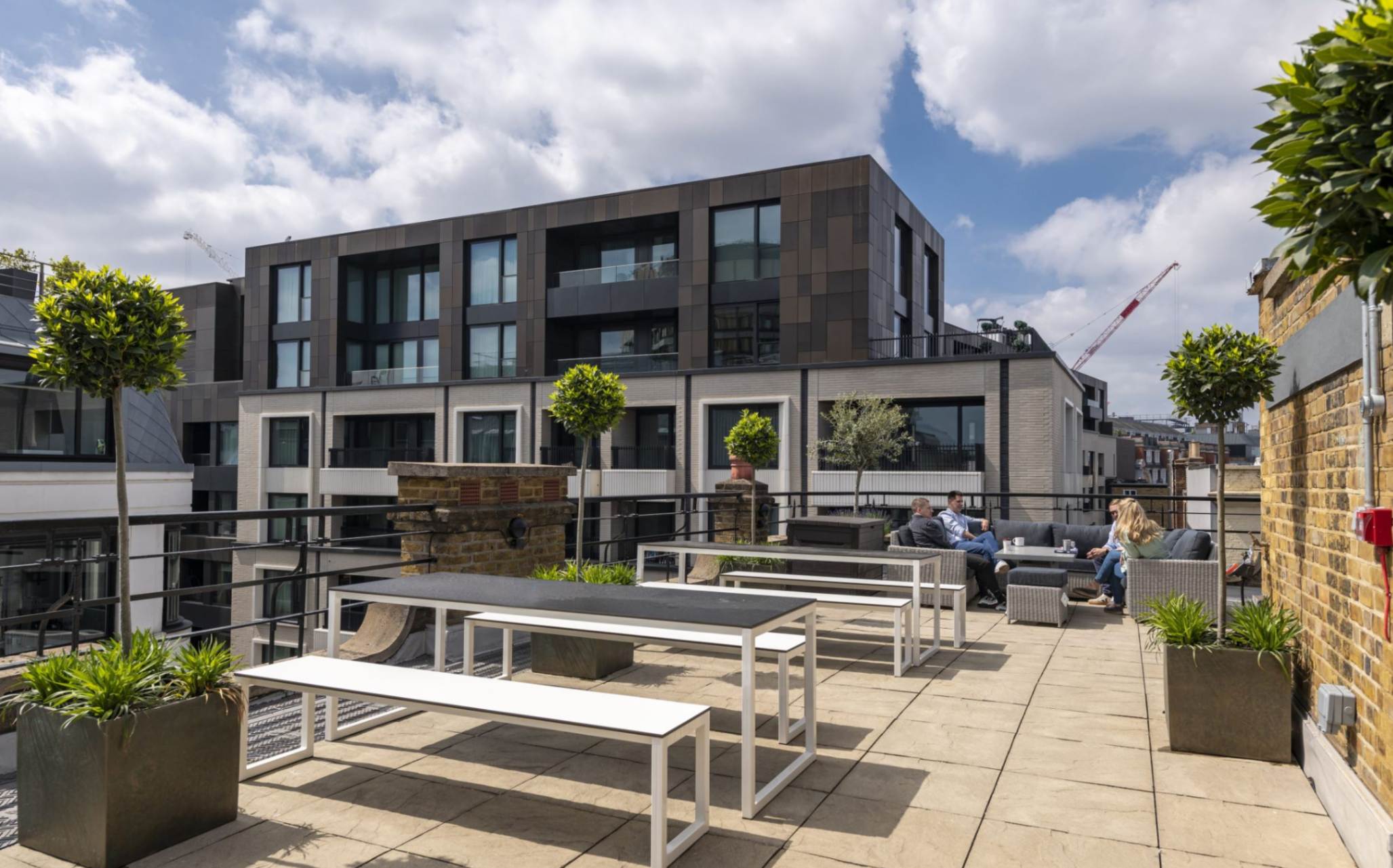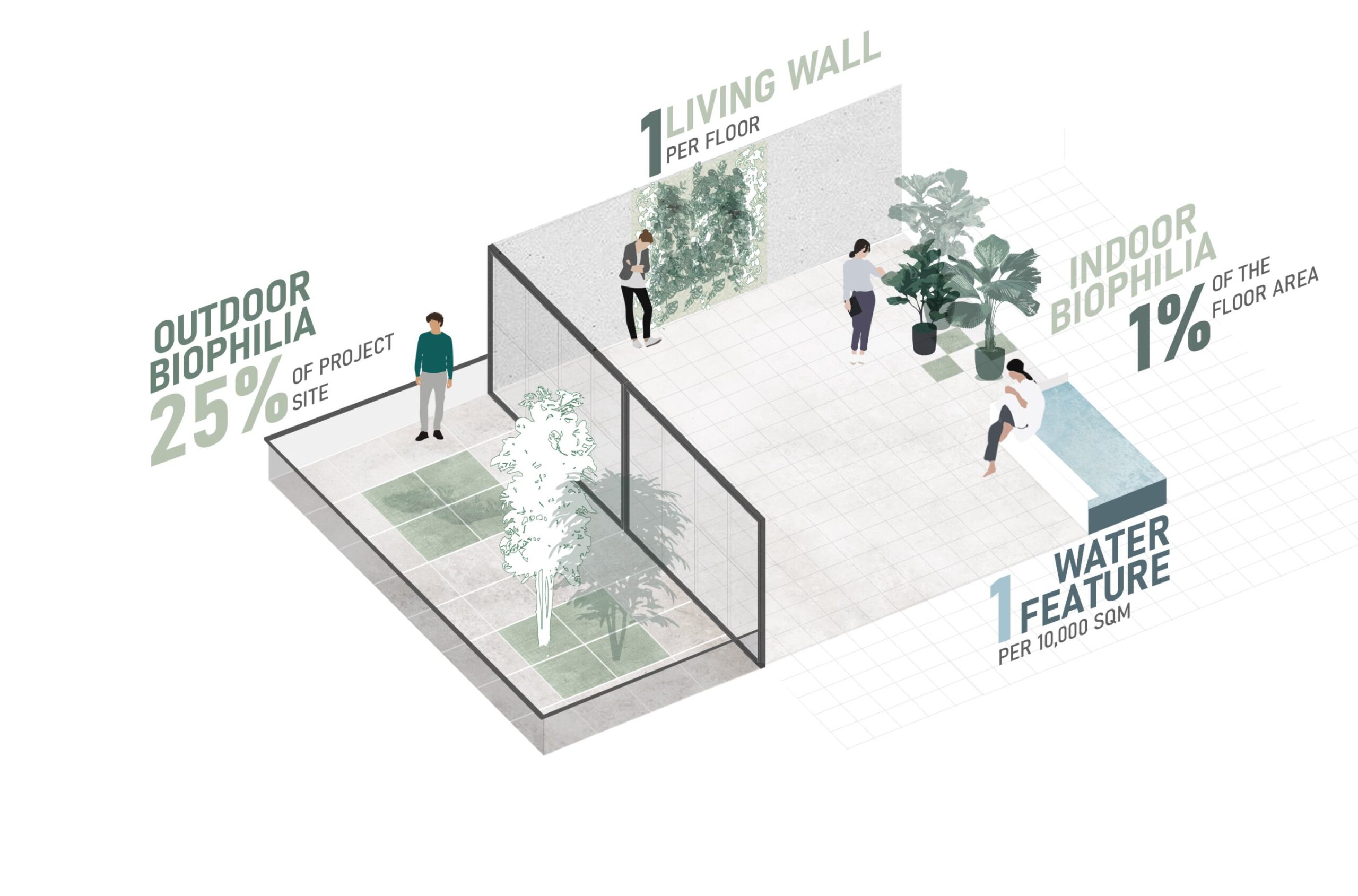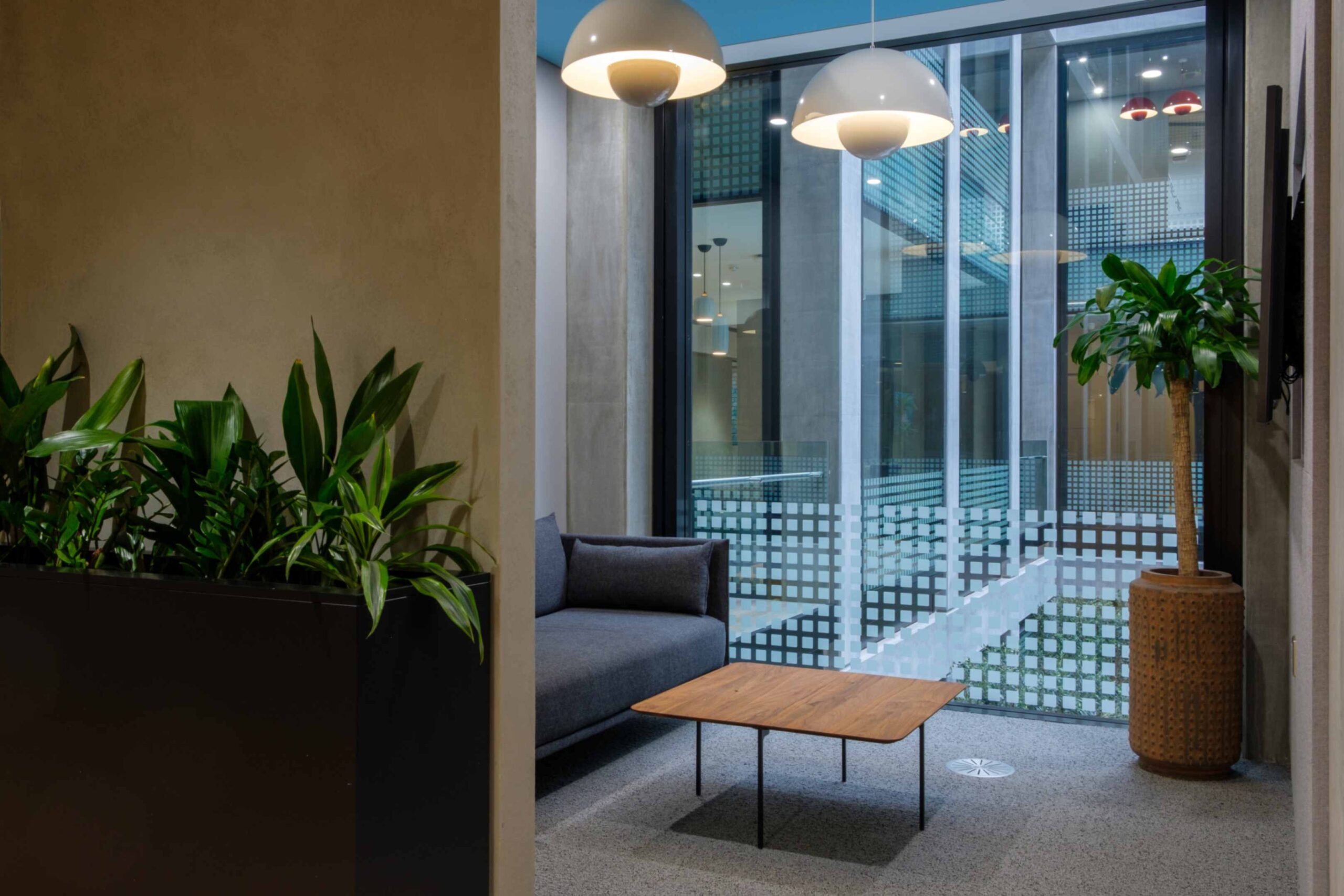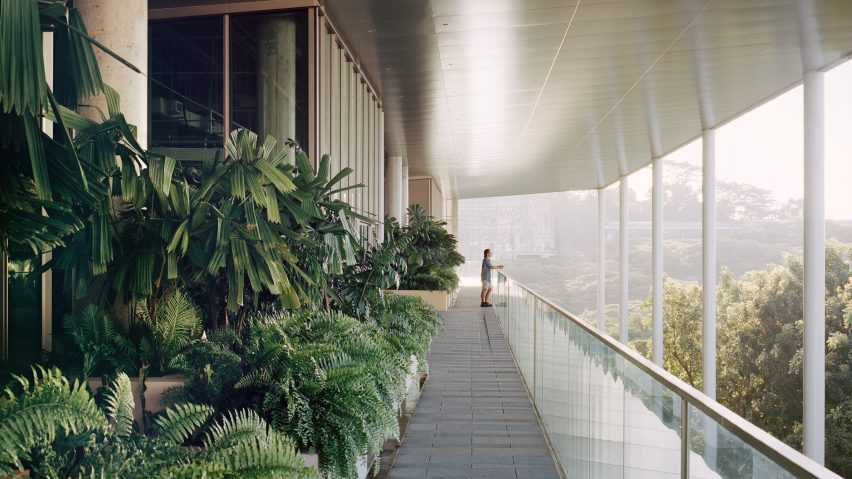Discover the potential of biophilic design within WELL-certified buildings. Dive into the essence of biophilia, as the latest WELL v2 standards places nature at the core of workplace well-being. From integrating natural elements indoors to creating restorative outdoor spaces, explore how WELL certification not only boosts productivity but also make for a culture of sustainability and employee well-being.
In this blog, we will cover:
___________________________________________________________
What Is WELL?
The International WELL Building Institute (IWBI™) developed the WELL standard after seven years of collaborative research with scientists, doctors, and architects. This initiative aimed to investigate the intricate relationship between the built environment and the health and well-being of its occupants. After all, it’s the occupants that the building was built for.
Comprising ten fundamental concepts—air, water, light, nourishment, movement, thermal comfort, sound, materials, mind, and community—the WELL standard sets the benchmark for building quality. Projects seeking certification must fulfil specific pre-conditions for each concept, ensuring compliance with the minimum standard. Ratings range from Bronze to Platinum, reflecting varying degrees of achievement.
Situated within the ‘Mind’ concept, biophilia encompasses two essential features.

Feature 88 Biophilia I – Qualitative
WELL says: ‘Exposure to views and images of nature can help to speed up healing and recovery time, boost positive feelings and reduce negative ones. Interior environments that are cold, sterile and devoid of life, on the other hand, can diminish our experience, mood and happiness. ‘
This feature is aimed at creating a human-nature connection within the design. Feature 88 requires design teams to develop a biophilia plan for incorporating natural elements, lighting, and space planning into each design stage. It means that there will be a thoughtful integration of environmental features, promoting a connection between humans and nature within the built environment.
Feature 100, Biophilia II – Quantitative
WELL says: “Biophilia supports the idea that humans have an affinity towards the natural world. Evidence on the emotional and psychological benefits of nature is mounting. Research indicates that the experience of nature or nature-derived patterns can improve experience, mood and happiness.”
This feature is about incorporating natural elements into interior and exterior design to support occupants’ emotional and psychological well-being. This feature builds upon the concept of biophilia, which recognises the intrinsic human connection with nature.
For this feature, WELL project design teams must develop a biophilia plan that supports:
- Outdoor Biophilia where at least 25% of the project site must feature landscaped grounds or rooftop gardens.
- Indoor Biophilia where at least 1% of the floor area must be covered by plants, plus one living wall should be included per floor.
- Water Feature where at least one water feature should be included for every 10,000 m2.
___________________________________________________________
WELL V2
The latest iteration, WELL v2, has amplified the significance of biophilic design, with nature now playing a pivotal role in four aspects of the v2 Mind Concept:
1. M02.1 Provide Access to Nature
Projects integrate and encourage occupant access to nature within the project boundary through the following:
- Indirect connection to nature through the use of natural materials, patterns, colours, or images.
- Space layout addressing the placement of natural elements along with common circulation routes, shared seating areas, and rooms to enhance occupant exposure.
- Direct connection to nature through at least two of the below:
– Plants
– Water
– Light
– Nature views

2. M07.1 Provide Restorative Indoor Spaces
This feature gives credit to projects with indoor spaces designated for complementation, relaxation, and restoration. The restorative space must be 7m2 minimum per occupant, and up to 74m2 is required. Nature incorporation is one of the design criteria along with sound masking, calming textures, and visible privacy, to name a few.
3. M07.2 Provide Restorative Outdoor Spaces
This feature gives credit to projects with outdoor spaces designated for complementation, relaxation, and restoration. The restorative space must be 7m2 minimum per occupant, and up to 74m2 is required. Nature incorporation is one of the design criteria along with sound masking, calming textures, and visible privacy, to name a few.
4. M09.1 Enhanced Access to Nature
This feature gives credit to projects which complete at least two of the following:
- Outdoor nature access with at least 25% of the exterior building site area consisting of accessible landscaped grounds, or rooftop gardens.
- Indoor nature access with any combination of indoor plants or water features that are within a direct line of sight of at least 75% of all workstations and seating.
- Views of outdoor landscapes within a direct line of sight for at least 75% of all workstations and seating.
- Nearby nature access with at least one green or blue space of a minimum of 0.5 hectares within 300 m walking distance from the project.
___________________________________________________________

Benefits Of WELL:
WELL certification offers numerous advantages, including:
- Attracting and retaining employees by demonstrating a dedication to their well-being and contentment
- Improving productivity by providing better air quality, lighting, nutrition, and acoustics
- Decreasing absenteeism and presenteeism by creating healthier environments that improve mood
- Setting businesses apart in the market and building a reputation for sustainable practices
- Building resilience against viruses through air quality and filtration systems
- Tracking progress over time with recertification every three years
Companies with WELL certification report higher satisfaction and efficiency among their employees. Additionally, it allows businesses to showcase their commitment to sustainability to stakeholders through third-party validation.
Extra benefits:
On average, employees in the UK are absent from work for about four to six days per year. The Chartered Institute of Personnel and Development identifies mental ill health as the primary cause of long-term absence, accounting for 59%, closely followed by stress at 54%.
Deloitte’s estimates suggest that mental ill health imposes a significant financial burden on UK employers, ranging from £33bn to £42bn annually. The World Green Building Council highlights the potential for substantial productivity gains, with improvements of 8%-11% achievable through better air quality in office environments.
Research published in the Journal of Building and Environment reveals the positive impacts of WELL certification across multiple offices:


Recent Comments